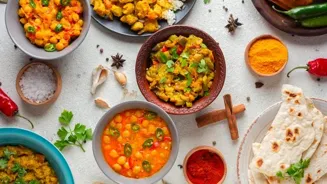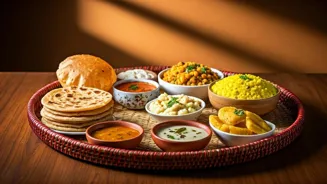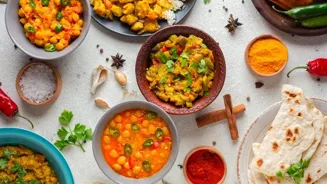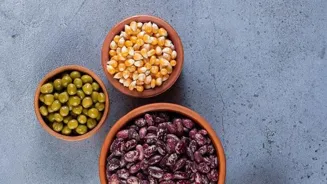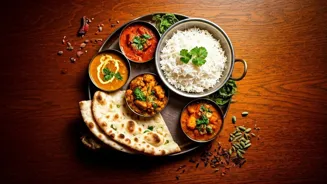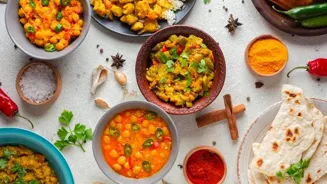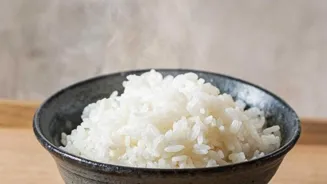Unveiling Indian Cooking Secrets: Pro Tips for Delicious Dishes! Discover the essence of Indian cuisine with expert advice
Indian cuisine, a vibrant mosaic of flavors and aromas, has captivated palates
worldwide. From the snow-capped Himalayas to the sun-kissed beaches of Kerala, each region boasts its unique culinary identity, shaped by local ingredients, traditions, and history.
Mastering the art of Indian cooking can seem daunting, but with the right guidance and a few insider tips, anyone can unlock the secrets to creating authentic and delicious dishes at home.
We've consulted with seasoned Indian chefs to bring you ten essential tips that will elevate your cooking game. These tips cover everything from ingredient selection and preparation to cooking techniques and presentation, ensuring that your Indian meals are nothing short of spectacular.
Whether you're a beginner or an experienced cook, these tips are sure to enhance your culinary skills and bring the magic of Indian cuisine to your table. Get ready to embark on a flavorful journey and discover the joys of Indian cooking!
Quality ingredients are key in Indian cuisine for vibrant, flavorful dishes
The foundation of any great dish lies in the quality of its ingredients. This holds especially true for Indian cuisine where fresh, aromatic spices are the heart and soul of every preparation.
Chefs emphasize sourcing whole spices whenever possible and grinding them fresh at home using a spice grinder or a traditional mortar and pestle. Freshly ground spices release their essential oils, resulting in a more intense and nuanced flavor profile.
It's advisable to purchase spices from trusted sources that guarantee their purity and freshness. When it comes to vegetables, opt for seasonal produce that is ripe and flavorful. Remember to wash and clean all ingredients thoroughly before using them in your recipes.
Consider buying organic ingredients whenever feasible to minimize exposure to pesticides. The fresher the ingredients, the more authentic and vibrant your dishes will be. Don’t underestimate the power of good quality lentils and rice, as they form the base of many Indian meals.
Indian cooking: The art of tempering spices elevates dishes
One of the cornerstones of Indian cooking is the art of tempering, also known as "tadka" or "chounk." This involves heating oil or ghee and adding a combination of spices like cumin seeds, mustard seeds, dried red chilies, and asafoetida (hing).
The sizzling spices release their aroma, infusing the oil with intense flavor. This fragrant oil is then poured over the dish, adding a final layer of complexity. Mastering the art of tempering requires careful attention to temperature and timing.
The spices should sizzle and release their aroma without burning. The order in which spices are added also plays a crucial role in the final flavor.
Some spices, like cumin seeds, need to be added first to allow their flavors to fully develop, while others, like asafoetida, should be added towards the end to prevent them from burning. Experiment with different spice combinations to create your own unique tempering blends.
A well-executed tadka can transform a simple dish into a culinary masterpiece.
Garlic, ginger, onions: Indian cooking's flavor foundation
Garlic, ginger, and onions form the holy trinity of Indian cooking. These aromatic ingredients are the foundation of countless curries, gravies, and sauces. Professional chefs advocate for using a generous amount of these ingredients to create a robust and flavorful base.
The key is to sauté them properly until they are golden brown and caramelized. This process, known as "bhuna," releases their sweetness and deepens their flavor. The ratio of garlic, ginger, and onions can vary depending on the dish, but a common starting point is 2:1:4 respectively.
Some chefs prefer to use a ginger-garlic paste, which is readily available in stores, but freshly minced garlic and ginger are always preferable for a more intense flavor. When sautéing onions, make sure to stir them frequently to prevent them from burning.
patience is key to achieving the perfect golden-brown color and unlocking their full potential.
Adding spices in the right order enhances Indian flavors
Understanding the order in which to add spices is crucial for achieving balanced and harmonious flavors. Indian recipes often call for a combination of whole spices and ground spices.
Whole spices, like cinnamon sticks, cardamom pods, and cloves, are typically added at the beginning of the cooking process to infuse the oil or ghee with their aroma.
Ground spices, like turmeric powder, coriander powder, and cumin powder, are added later to avoid burning and to maximize their flavor impact. It's important to note that some spices, like chili powder, can become bitter if added too early or cooked for too long.
The timing of spice addition will depend on the particular recipe and the desired flavor profile. Experimenting with different spice combinations and paying attention to the order in which they are added will help you develop a better understanding of Indian flavors.
Yogurt's vital role in Indian cuisine, tips to prevent curdling
Yogurt plays a significant role in Indian cooking, adding richness, tanginess, and a creamy texture to dishes. It is used in marinades, curries, and desserts. However, it's essential to handle yogurt with care to prevent it from curdling, especially when cooking at high temperatures.
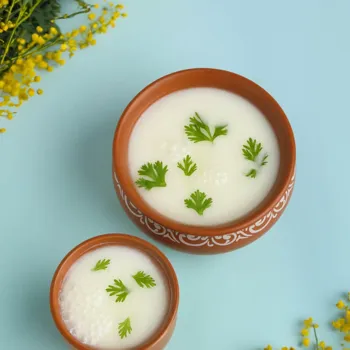
Chefs recommend using full-fat yogurt and whisking it well before adding it to the dish. It's also advisable to temper the yogurt by gradually adding small amounts of the hot gravy to the yogurt before incorporating it fully. This helps to stabilize the yogurt and prevent it from separating.
Another tip is to avoid boiling the yogurt after it has been added to the dish. Simmering at low heat is sufficient to allow the flavors to meld. In some recipes, like raita, yogurt is used in its raw form, adding a refreshing and cooling element to the meal.
The quality of the yogurt will also impact the final result, so choose a thick and creamy variety for the best flavor and texture. A teaspoon of cornflour also when added to the gravy along with youghurt avoids curdling.
AI Generated Content. Glance/InMobi shall have no liability for the content